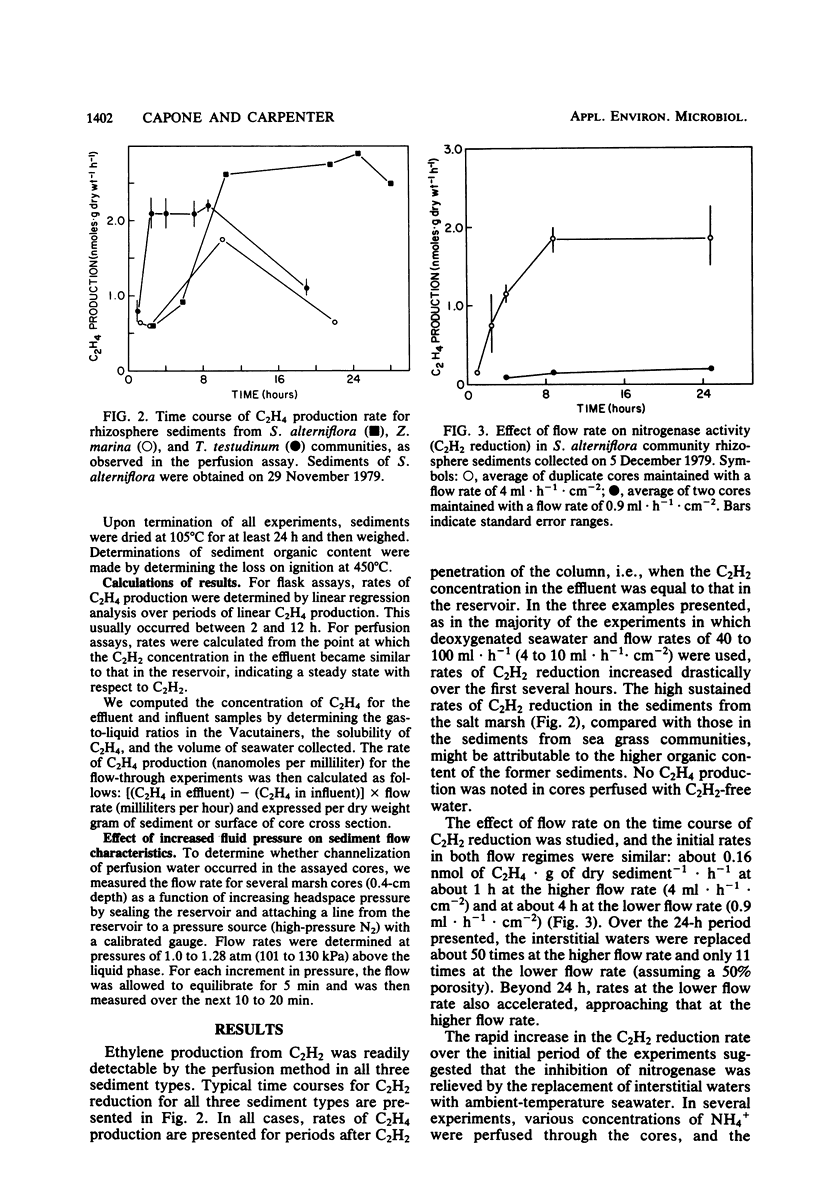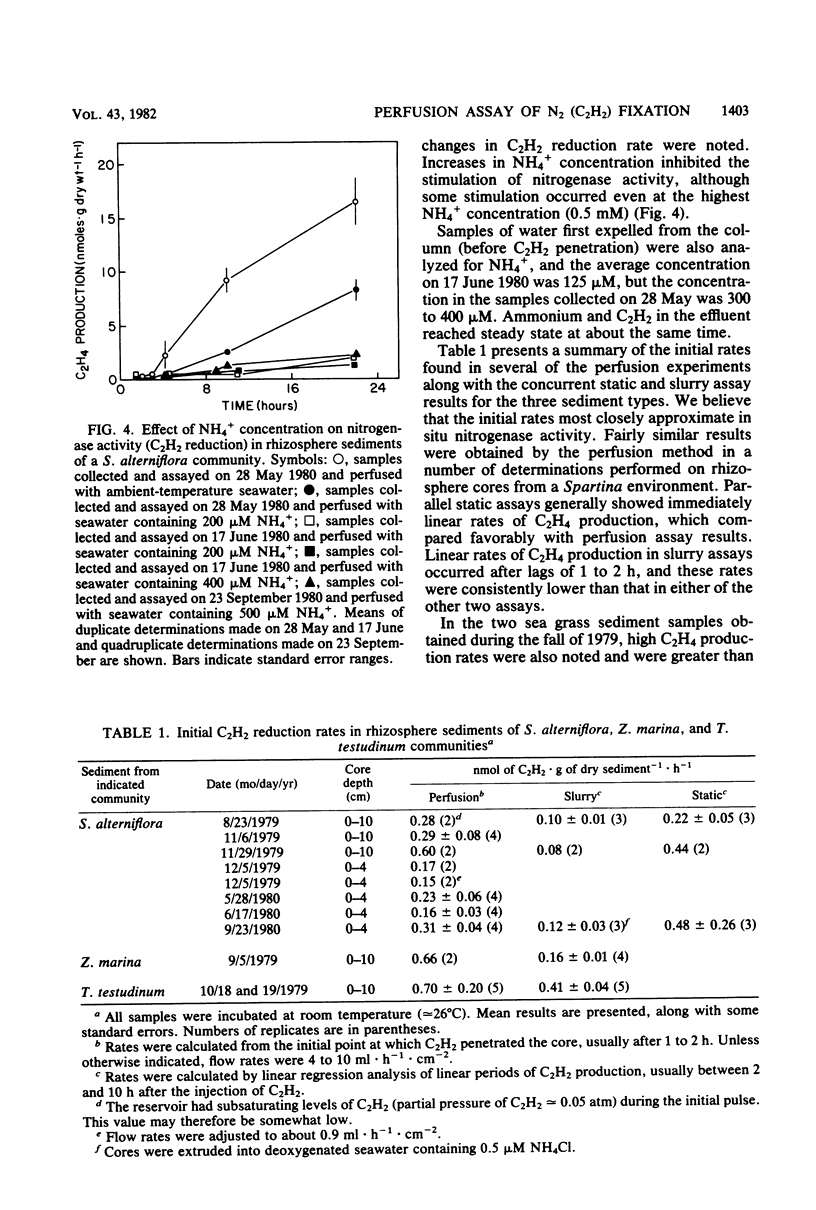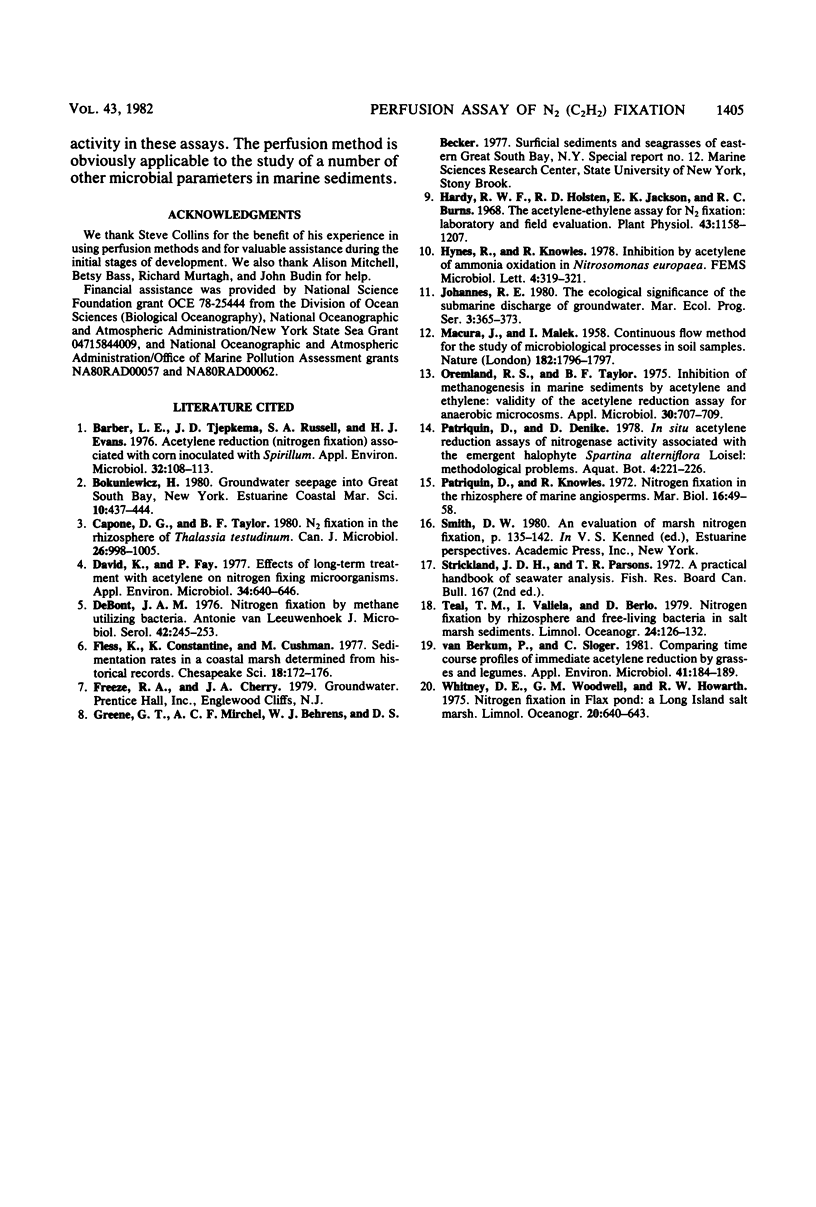Abstract
A perfusion method for assaying nitrogenase activity (acetylene reduction) in marine sediments was developed. The method was used to assay sediment cores from Spartina alterniflora (salt marsh), Zostera marina (sea grass), and Thalassia testudinum (sea grass) communities, and the results were compared with those of conventional sealed-flask assays. Rates of ethylene production increased progressively with time in the perfusion assays, reaching plateau values of 2 to 3 nmol · g of dry sediment−1 · h−1 by 10 to 20 h. Depletion of interstitial NH4+ was implicated in this stimulation of nitrogenase activity. Initial acetylene reduction rates determined by the perfusion assay of cores from the Spartina community ranged from 0.15 to 0.60 nmol of C2H4 · g of dry sediment−1 · h−1. These rates were similar to those for sediments assayed in sealed flasks without seawater when determined over linear periods of C2H4 production. Initial values obtained by using the perfusion method were 0.66 nmol of C2H4 · g of dry sediment−1 · h−1 for sediments from Zostera communities and 0.70 nmol of C2H4 · g of dry sediment−1 · h−1 for sediments from Thalassia communities. In all cases, rates determined by simultaneous slurry assays were lower than those determined by the perfusion method.
Full text
PDF





Selected References
These references are in PubMed. This may not be the complete list of references from this article.
- Barber L. E., Tjepkema J. D., Russell S. A., Evans H. J. Acetylene reduction (nitrogen fixation) associated with corn inoculated with Spirillum. Appl Environ Microbiol. 1976 Jul;32(1):108–113. doi: 10.1128/aem.32.1.108-113.1976. [DOI] [PMC free article] [PubMed] [Google Scholar]
- Bont J. A. Nitrogen fixation by methane-utilizing bacteria. Antonie Van Leeuwenhoek. 1976;42(3):245–253. doi: 10.1007/BF00394121. [DOI] [PubMed] [Google Scholar]
- Capone D. G., Taylor B. F. N2 fixation in the rhizosphere of Thalassia testudinum. Can J Microbiol. 1980 Aug;26(8):998–1005. doi: 10.1139/m80-169. [DOI] [PubMed] [Google Scholar]
- David K. A., Fay P. Effects of long-term treatment with acetylene on nitrogen-fixing microorganisms. Appl Environ Microbiol. 1977 Dec;34(6):640–646. doi: 10.1128/aem.34.6.640-646.1977. [DOI] [PMC free article] [PubMed] [Google Scholar]
- Hardy R. W., Holsten R. D., Jackson E. K., Burns R. C. The acetylene-ethylene assay for n(2) fixation: laboratory and field evaluation. Plant Physiol. 1968 Aug;43(8):1185–1207. doi: 10.1104/pp.43.8.1185. [DOI] [PMC free article] [PubMed] [Google Scholar]
- MACURA J., MALEK I. Continuous-flow method for the study of microbiological processes in soil samples. Nature. 1958 Dec 27;182(4652):1796–1797. doi: 10.1038/1821796a0. [DOI] [PubMed] [Google Scholar]
- Oremland R. S., Taylor B. F. Inhibition of methanogenesis in marine sediments by acetylene and ethylene: validity of the acetylene reduction assay for anaerobic microcosms. Appl Microbiol. 1975 Oct;30(4):707–709. doi: 10.1128/am.30.4.707-709.1975. [DOI] [PMC free article] [PubMed] [Google Scholar]
- van Berkum P., Sloger C. Comparing time course profiles of immediate acetylene reduction by grasses and legumes. Appl Environ Microbiol. 1981 Jan;41(1):184–189. doi: 10.1128/aem.41.1.184-189.1981. [DOI] [PMC free article] [PubMed] [Google Scholar]


